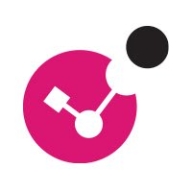


Microsoft Remote Desktop Services and Check Point Remote Access VPN compete in remote access solutions. While both have strengths, Microsoft Remote Desktop Services is noted for centralized management and server hosting, whereas Check Point Remote Access VPN is praised for its strong security and integration with existing firewalls.
Features: Microsoft Remote Desktop Services offers centralized application hosting and management, ensuring a seamless experience across Mac and Windows platforms with full server accessibility and high reliability. Check Point Remote Access VPN excels in its integration with existing firewalls, offering seamless connectivity, strong security measures like multi-factor authentication, and comprehensive endpoint compliance.
Room for Improvement: Microsoft Remote Desktop Services could enhance network bandwidth handling, improve cross-platform compatibility, and automate application installations. Check Point Remote Access VPN may benefit from more user-friendly configuration processes, better Linux OS support, and pricing revisions to accommodate a broader license range.
Ease of Deployment and Customer Service: Microsoft Remote Desktop Services benefits from straightforward deployment when bundled with Microsoft solutions, though technical support quality varies. Check Point Remote Access VPN is robust across hybrid and cloud environments, but initial setup can be complex, and support expertise may be lacking for non-standard implementations.
Pricing and ROI: Microsoft Remote Desktop Services is considered good value, especially when bundled with Windows, despite some complexities in licensing models. Check Point Remote Access VPN offers competitive pricing, though it may be higher than alternatives, with its comprehensive security features providing potential for a good return on investment through enhanced security and remote access capabilities.
Everything we've gained from it makes my job easier day after day, and I see value in it as an engineer.
Microsoft Intune not only saves costs by reducing the number of personnel needed but also offers a comprehensive solution for managing laptops, applications, security, individual access, and enrollment.
Importantly, when someone leaves the company, it helps protect document access on their devices.
It reduces the dependency on being physically present in the office and enhances the overall user experience, saving time and maintaining security.
I have seen a return on investment with fewer employees needed and time saved.
It has reduced the number of support tickets related to remote access by about 30%, saving our IT team significant time.
When a support ticket is submitted, it directly reaches someone with Intune support expertise.
When I contacted Microsoft, they had the same expertise, if not more, which is phenomenal because I felt heard and my problem was solved.
Sometimes, the support provided is excellent, and the representative is knowledgeable, while other times, the service needs improvement.
They are really helpful, and whenever we face any technical or configuration issues, we reach out to them, and they help us resolve the issues as soon as possible.
Contacting the Technical Assistance Centers (TACs) initially can be difficult, but once I get in touch with the TAC team, it is easy to solve problems.
The customer support for Check Point Remote Access VPN has been very helpful and responsive whenever we needed assistance.
The scalability of Microsoft Intune is ten out of ten.
Ideally, we want to automatically segregate devices based on user properties like primary use, but currently, dynamic groups seem limited to device properties.
It supports organizations with 200 endpoints and those with more than 15,000 endpoints.
I don't see that we can hit any kind of roof in our organization.
The scalability of Check Point Remote Access VPN is good as it supports a large number of remote users simultaneously.
Our organization finds Check Point Remote Access VPN handles increased numbers of remote users smoothly without performance issues.
My impression is that most of the solutions, especially today, make sense for large corporations with 2000 seats or more.
We have not experienced downtime, bugs, or glitches.
It appears Microsoft Intune undergoes changes without informing customers.
Microsoft Intune has been very stable.
Otherwise, the experience and stability are outstanding.
Check Point Remote Access VPN is very stable.
Features like unlocking devices sometimes fail, and the support offered for other operating systems is insufficient.
There are communication issues, so you might start working with a feature without knowing if it will be deprecated six months from now.
Many third-party companies offer single-pane-of-glass reporting that shows you what your update environment looks like, how your patch is doing, application status, etc., but Intune's reporting is not intuitive.
The response time is much worse, with the first layer of support lacking sufficient knowledge on how to troubleshoot issues.
Optimizing handshake speed and reducing reconnection delays would improve the user experience, particularly for mobile and hybrid workers.
Deploying these solutions requires higher technical expertise than other solutions.
It should be easier to create a template and duplicate users.
The only problem I see is that when I am connected, there is a certain lag because of the network.
Introductory professional services, like a fast-track service, were included with our E5 membership, and there have been no additional costs.
The Intune suite and add-ons, such as batch management and remote help, are costly.
It costs approximately forty euros per user per month.
I'm getting the hardware at a very reasonable cost that fits my budget.
It is competitively priced, and we have chosen it for its market leadership in the firewall space.
The pricing, setup cost, and licensing are straightforward, though the setup is a bit expensive.
These licenses are not cheap, as they add up in cost.
Intune excels in configuration and compliance management for Windows 10, ensuring devices receive timely updates and adhere to organizational standards.
Dynamic groups allow us to set conditions for automatic membership, eliminating the need for user intervention or manual review and ensuring a seamless workflow.
Windows Autopatch is the most valuable because it removes the burden of patch management.
The functionality enables secure access for remotely connecting users, which is necessary for our operations.
Check Point Remote Access VPN has positively impacted my organization by improving productivity and given us a workaround in times of downtime.
Check Point Remote Access VPN has impacted my organization positively by providing better security and ensuring our data is safe within the entity.
The main benefits that Microsoft Remote Desktop Services provide to me include streamlining my working process, ensuring security, and offering flexibility to connect to virtual desktops and apps from multiple devices.
A valuable feature of Microsoft Remote Desktop Services is its native integration with Microsoft platforms.
| Product | Market Share (%) |
|---|---|
| Microsoft Intune | 9.6% |
| Microsoft Remote Desktop Services | 9.1% |
| Check Point Remote Access VPN | 2.4% |
| Other | 78.9% |



| Company Size | Count |
|---|---|
| Small Business | 116 |
| Midsize Enterprise | 46 |
| Large Enterprise | 152 |
| Company Size | Count |
|---|---|
| Small Business | 46 |
| Midsize Enterprise | 31 |
| Large Enterprise | 33 |
| Company Size | Count |
|---|---|
| Small Business | 39 |
| Midsize Enterprise | 16 |
| Large Enterprise | 30 |
Microsoft Intune provides centralized management of mobile devices and applications, ensuring security, compliance, and productivity through integration with Microsoft services like Microsoft 365 and Azure Active Directory.
Organizations use Intune for managing mobile devices and applications, enhancing security and compliance across platforms. With features like single sign-on, conditional access, and zero-touch deployment via Autopilot, it facilitates efficient operations. Intune's scalability, easy enrollment, and capabilities such as remote wipe support diverse device management, offering robust data protection and efficient operation. Despite its features, improvement areas include reporting, compatibility with non-Microsoft devices, and better support for macOS and Linux devices.
What are the key features of Microsoft Intune?
What benefits should users look for in reviews?
In industries such as finance, healthcare, and education, Microsoft Intune is implemented to ensure secure and compliant device management. Companies leverage its capabilities to deploy security policies and manage both corporate-owned and BYOD environments, facilitating a unified approach to data protection and compliance.
Remote secure access VPN is a solution that provides users with remote access to an organization’s network. The host may have VPN client software loaded or use a web-based client. The solution leverages security features like multi-factor authentication, endpoint scanning, and encryption of all data in motion.
Check Point Remote Access VPN provides individuals with protected and efficient access to a company network from anywhere. This strategy fosters collaboration and connectivity between distributed teams and offices.
Features of Check Point Remote Access VPN
Key features of the secure remote access VPN include:
The system enforces endpoint security with endpoint compliance. It monitors and verifies the security status of each endpoint and reports back to the Security Gateway. The gateway, in turn, checks the compliance level and directs the connectivity to the right resources.
Users can deploy the Remote Access VPN in one of three ways:
Remote Access VPN is centrally managed. The centralized console enables management and enforcement of policies with a single log-in.
The Remote Access VPN has a web portal that users can use to connect securely to corporate applications, such as web-based resources, file-sharing, and email. Administrators can customize the web portal to match the brand identity.
Remote Access VPN offers two choices for remote access:
The authentication features include password management, RADIUS challenge/response, CAPI software, and hardware tokens. P12 certificates, and SecurID.
The system establishes a VPN tunnel on demand. It also re-arranges connections when roaming. The tunnel can automatically tear down when the user is on the corporate LAN.
There are several connection features, such as Hotspot detection, office mode IP, split tunneling, and automatic fallback to HTTPS.
Benefits of Check Point Remote Access VPN
One of the key advantages of Remote Access VPN is that it provides remote workers with a secure way to connect to a corporate network from any device, including their personal devices. The data encryption in transit enables them to securely access the resources they need for their tasks.
It also provides IT support and technicians with a faster way to troubleshoot software issues. In the case of a ticket, IT doesn’t need to go to the server location to fix the problem but can troubleshoot it remotely.
A remote secure access VPN is also an affordable alternative for small and medium-sized businesses, without requiring expensive infrastructure.
Reviews from Real Users
A Global IT Network and Security Service Senior Specialist at a manufacturing company who uses Check Point Remote Access VPN says, "I found the MEP feature the most valuable. This has improved users' latency allowing the users to connect to the nearest Azure Check Point VM."
"Organizations that already use the Check Point NGFW Solution do not require any additional hardware, which makes the implementation straightforward and reduces the time to go live," explains Basil D., Senior Manager at a financial services firm.
Manuel B., a Voice and data infrastructure specialist at a tech services company, says that "The IPSec VPN, Mobile Access, and Identity Awareness are three of the blades with which we have been working with since the pandemic. This has given us great mobility, making our network more dynamic."
Microsoft Remote Desktop Services is a highly regarded remote access tool in addition to being a top-ranked Virtual Desktop Infrastructure (VDI) solution in the marketplace today.
Microsoft Remote Desktop Services (RDS) is a suite of valuable elements of the Windows operating system (OS) that serve specific desired objectives. Microsoft RDS integrates various features that allow approved users to gain access to graphical desktops and Windows applications remotely. Approved users are able to deploy applications or even a complete desktop without having to install anything on their devices. Everything remains in the cloud. This ensures that there are never any compatibility issues and keeps the organization's original network secure at all times. Administrators are also able to ensure that data cannot be stored in any unapproved location, such as the local device, unapproved drives, or any other location.
Microsoft RDS makes it easy for business organizations to access Windows Desktops and other Windows applications remotely to ensure today’s busy enterprise organizations are able to maintain the highest levels of productivity at all times. There are two basic ways organizations can effectively utilize RDS.
Microsoft Remote Desktop Services Benefits
Microsoft Remote Desktop Services has many benefits. Some of its most valuable benefits include:
Microsoft Remote Desktop Services makes it easy for busy enterprise organizations to stay productive and remain competitive in today’s aggressive marketplace. An organization's end-users can be given access to their own specific desktops from any location, anytime, using any approved device. Additionally, users can access Microsoft applications without having an effect on their device's resource capacity or performance.
Reviews from Real Users
“What I found most valuable in Microsoft Remote Desktop Services is accessibility because the solution lets you take control of your computer remotely, and that's a good feature.” Pascal B., IT consultant at Secoptrial
“The most valuable features of Microsoft Remote Desktop Services are unification, central management, and accessibility.” Jan S. Solution Architect at a tech services company
“The most valuable features are that it is fast and cost-effective. I am not aware of a replacement currently on the market.” Ramon H. Director at Empaco
We monitor all Remote Access reviews to prevent fraudulent reviews and keep review quality high. We do not post reviews by company employees or direct competitors. We validate each review for authenticity via cross-reference with LinkedIn, and personal follow-up with the reviewer when necessary.